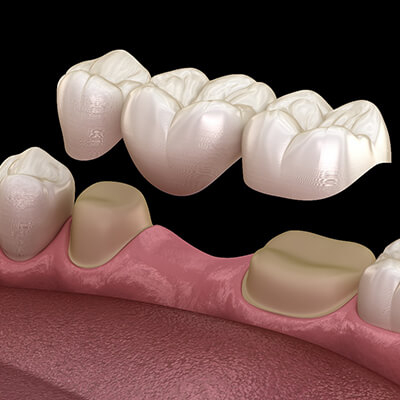A dental crown is a type of restorative dentistry that is used to fix or cover any broken teeth you may have with a long-lasting solution. Dental crowns are designed to ensure that the broken teeth are kept from receiving more damage but allow you to have full function of your mouth.
For that reason, it is important to know what to expect before getting a dental crown, and below, we will tell you the seven most important things to know before getting a dental crown.
1. Dental Crowns Look Like Your Own Teeth
If you are worried that the dental crown will stand out in your mouth, similar to a golden tooth like an inlay or an onlay, fear not. This is because dental crowns have been designed to look like the existing teeth in your mouth.
During your dental exam the dentist will color-match the crown to your teeth, which will make the crown look natural inside your mouth.
2. Dental Crowns Last a Long Time
Depending on the material used to create the dental crown, they can last up from five years all the way to fifteen years in your mouth.
Metal dental crowns are often used on your molars as the metal can withstand chomping and chewing. They will last the longest as they require the least amount of upkeep. While they do not look the nicest, they are somewhat hidden away in your mouth.
If you suffer from metal allergies or want a natural look, you can opt for ceramic or porcelain dental crowns. These types of dental crowns do not wear down the enamel of your natural teeth and are more gentle but will not last as long.
3. Can Protect Weak Teeth
Dental crowns can also be used to protect any weak teeth you may have in your mouth and can stop the decay or damage from continuing.
As the dental crown will cover the tooth, you are saving as much of the original natural tooth as possible, and it can prevent you from needing to have major dental surgery.
4. Dental Crowns Cover Dental Implants
Dental crowns can be used to cover dental implants as a way to make them look more natural. Dental implants often are just metal screws, so to protect them and make them look more natural, a crown is placed on top so the screws are hidden.
5. Covers Discolored Teeth
A dental crown can cover any discolored teeth that you may have. A discolored tooth can happen from an injury, medication, or some other issue. Dental coverings can help with self-image and self-esteem by making your smile look great.
6. Dental Crown Care
Even though a dental crown is used to repair any damaged teeth, the crown still requires that you look after it. You can care for the crowns by brushing your teeth daily, flossing regularly, and using mouthwash. You must book regular dental check-ups to make sure the crowns are in good condition.
7. Dental Crowns Don’t Cause Pain
Even though dental surgeries and exams can be scary, getting dental crowns is considered a painless procedure.
The dentist will numb the area beforehand to help with the pain. The dentist will then start to design and create an impression of your tooth. Your tooth will be prepared, and a temporary crown will be placed until your final crown is ready.
If you are looking to get a dental crown or need to get your crowns cleaned, please feel free to contact our friendly dentists and staff to book an appointment at Kenmar Dental.



 Photo Credit: summercreekdentistry.com
Photo Credit: summercreekdentistry.com Photo Credit: infodentis.com
Photo Credit: infodentis.com Photo Credit: smileangels.com
Photo Credit: smileangels.com




